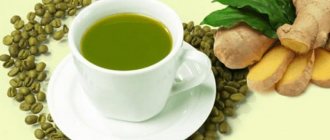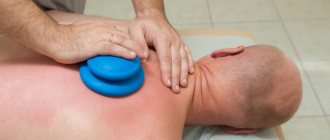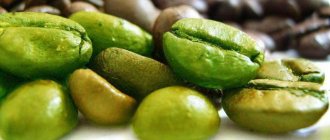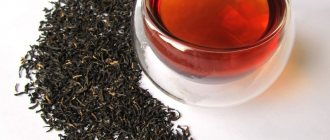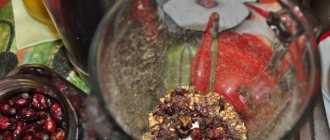Linoleic acid
Linoleic acid (cis, cis, -9,12-octadecadienoic acid) is a monobasic carboxylic acid, a nutrient, one of the essential Omega-6 unsaturated fatty acids, necessary for the normal functioning of the body. It is not produced by the body itself. It is a light yellow oily liquid. It enters the body mainly with food (vegetable oils and animal fats) in the form of complex lipids (triglycerides and phosphatides).
Contained in cell membranes (the amount is on average 10 times greater than Omega-3), it belongs to their structural elements and is critical for their functioning.
In cooking it is used for the production of margarine and cooking oils. In cosmetology, it is part of the so-called vitamin F, which is found in restorative cosmetic and dermatological products.
Possible consequences of the deficiency:
- Dry skin.
- Various skin lesions due to penetration of toxins, allergens, bacteria (allergic dermatitis, acne) through the stratum corneum.
- Baldness.
- Frequent colds.
- Pain in joints and muscles.
Taking linoleic acid will be more effective in combination with a sufficient amount of linolenic acid in the diet; these acids enhance the beneficial properties of each other.
Reasons for additional intake in the form of dietary supplements (beneficial properties):
- Positively affects the functioning of the heart.
- Reduces the total amount of cholesterol.
- Normalizes blood pressure.
- Strengthens the immune system.
- Slows down the aging of the body.
- Helps the body adapt to unfavorable environmental factors.
- Increases sensitivity to insulin.
- Improves cognitive functions.
- Positively affects the reproductive system of women.
- Helps maintain the transdermal water barrier of the epidermis.
- Promotes the formation of energy from fats.
- Stimulates muscle cells to grow.
Food sources:
- vegetable oils (walnut, sunflower, soybean, poppy seed);
- seeds and nuts;
- meat products;
- eggs.
Included in infant formula (also found in natural breast milk).
Average daily requirement of an adult: women - 12 g, men - 17 g.
Many dietary supplements include a conjugated form of LA, which has a slightly modified formula. This form is taken to activate lipolysis and accelerate metabolism.
Linoleic acid
CAS number:
60-33-3
Gross formula:
C18H32O2
Appearance:
yellow oily liquid.
Chemical name:
Linoleic acid, (Z,Z)-9,12-Octadecadienoic acid;
cis-9,cis-12-Octadecadienoic acid; Linolic acid. Physico-chemical properties:
Molecular weight 280.45 g/mol Density 0.902 Melting point -5 ºC Boiling point 229-230 ° C (16 mm Hg) Refractive index 1.4687-1.4707 Solubility: The substance is soluble in methanol, acetone. Insoluble in cold water. Hazardous combustion products: carbon monoxide, carbon dioxide and hydrogen fluoride.
Description:
Linoleic acid (also called cis, cis, -9,12-octadecadienoic acid) is an example of a polyunsaturated fatty acid due to the presence of C=C double bonds. It is an omega-6 fatty acid. It is the main fatty acid found in vegetable oils such as soybean, corn, and canola. It is used to produce margarine, cooking oils, as well as soaps, emulsifiers and quick-drying oils.
Linoleic acid belongs to one of two classes of essential fatty acids that are required by the human and animal body. If a person does not consume enough of these essential fatty acids, then several health problems may arise. Experimental diets with insufficient amounts of linoleate (the salt form of the acid) cause moderate skin lesions, hair loss, and disturbances in the skin repair process. Linoleic acid plays a special role in maintaining heart health. Randomized clinical trials have shown that replacing dietary saturated fat with linoleic acid reduces total LDL (low-density lipoprotein) cholesterol. There is also some evidence that linoleic acid improves insulin sensitivity and normalizes blood pressure.
The two families of EFAs (unsaturated fatty acids) are ω-3 (or omega-3 or n-3), which come from fish oil, and ω-6 (omega 6, n-6) - from vegetable oils (one of them is linoleic acid). When they were discovered as essential nutrients in 1923, the two families of essential fatty acids were designated "vitamin F." But around 1930 it was determined that they were better classified as fats than as vitamins, so the name "vitamin F" was replaced.
Application:
Because linoleic acid is an essential nutrient, it is commonly added to enteral, parenteral and infant formulas, where the fat content may vary depending on the specific use. There are also products with linoleic acid intended for topical use: creams, ointments, etc. When applied topically, linoleic acid helps treat skin disorders associated with its deficiency.
Linoleic acid and its isomer (conjugated linoleic acid) are actively used in special sports nutrition for weight loss by reducing subcutaneous fat. It is also used in a number of dietary supplements taken to reduce the risk of diseases of the cardiovascular system and even to prevent cancer. It is also prescribed as part of complex therapy for Alzheimer's disease, showing a positive effect in the pathogenesis of the disease at an early stage of the process.
Receipt:
The industrial synthesis of linolenic acid is as follows. First, ethyl ester of linoleic acid is obtained by mixing 3 components: tetrabromostearic acid (recrystallized), absolute ethyl alcohol and granulated zinc. The resulting mixture is heated, taking into account that the reaction is exothermic, and periodically cooled. After 5 minutes, when the bromine elimination reaction begins, the mixture is placed in a reflux refrigerator and it is boiled for 30 minutes. Then, at a certain interval, a solution of hydrogen chloride is added. The resulting mixture is combined with a solution of table salt, waiting for separation. The emulsion is then centrifuged and washed.
The resulting ether is dissolved in a 95% alcohol denatured sodium hydroxide solution and left overnight at room temperature. This mass is dissolved with warm water with the addition of carbon dioxide and dilute sulfuric acid. Linoleic acid floats to the surface as a transparent layer. The resulting acid is stored under carbon dioxide.
Effect on the body:
Linoleic acid (18:2ω6, cis, cis-9,12-octadecadienoic acid) is the most highly consumed PUFA found in the human diet. When consumed, linoleic acid undergoes 4 primary pathways. Like all fatty acids, it can be used as a source of energy. It can be esterified to form neutral and polar lipids such as phospholipids, triacylglycerols and cholesterol esters. As part of membrane phospholipids, linoleic acid functions as a structural component to maintain a certain level of membrane fluidity of the transdermal water barrier of the epidermis. In addition, when released from membrane phospholipids, it can be enzymatically oxidized to various derivatives involved in cellular signaling (i.e., 13-hydroxy or 13-hydroperoxyoctadecadienoic acid (13-H(P)ODE).
As a parent compound for the PU 6 PUFA family, linoleic acid can be extended and unsaturated to other bioactive CO 6 PUFAs such as γ-linolenic acid (18:3ω6) and arachidonic acid (20:4ω6). Subsequently, arachidonic acid can be converted into a myriad of biologically active compounds called eicosanoids, such as prostaglandins and leukotrienes. These eicosanoids are important in the normal metabolic function of cells and tissues, but when chronically released and in excess, they are known to contribute to a number of chronic diseases such as inflammation and cancer.
After consumption and absorption by the enterocytes lining the small intestine, linoleic acid is packaged into chylomicrons as phospholipids, triacylglycerols, or cholesteryl esters and then enters the general circulation (subclavian vein) through the thoracic canal. Linoleic acid is delivered to hepatic and extrahepatic tissues as chylomicrons are delipidated en route and cleared by the liver as it passes into much smaller residual particles. After cellular uptake, the fate of linoleic acid is determined by tissue needs, i.e. incorporation into membrane phospholipids, desaturation and elongation, etc.
Linoleic acid is an essential nutrient that contains two double bonds on the ninth and 12th carbon atoms of the carbonyl functional group. Because humans cannot incorporate a double bond at the ninth carbon of a fatty acid, the fatty acid cannot be synthesized and therefore must be consumed in the diet. As the main component of ceramides, linoleic acid is involved in maintaining the transdermal water barrier of the epidermis. Linoleic acid levels in infants can be as low as 0.5-2.0% energy, and linoleic acid deprivation (ie, low-fat intravenous feeding) can result in scaly skin lesions, growth retardation, and plasma fatty acid changes and thrombocytopenia. Because linoleic acid is found in abundance in infant formulas and foods and in human breast milk, significant fatty acid deficiencies are not common in healthy individuals. Likewise, evidence of PU6 PUFA deficiency is extremely rare in the adult population in the absence of an inborn error of metabolism, i.e. FADS2 (fatty acid desaturase 2, Δ6 desaturase) deficiency, a rate-limiting desaturation of linoleic acid to arachidonic acid.
Although linoleic acid is an important nutrient, “there is no specific information on the amount of linoleic acid needed to correct symptoms of (ω6) PUFA deficiency,” so recommended daily allowances (RDAs) have not yet been established. As such, the dietary reference intakes for linoleic acid are adequate doses for women and men aged 19 to 50 years at 12 g/day and 17 g/day, respectively. Data is based on the approximate median intake of healthy individuals.
The main dietary sources of linoleic acid are vegetable oils, nuts, seeds, meat and eggs. Dietary intake of linoleic acid began to increase around 1969 and paralleled the introduction of soybean oil as a major commercial additive for many processed foods. Derived products containing soybean oil as the main ingredient are rich in linoleic acid. Although linoleic acid constitutes ~88% of the total PUFA in soybean oil, levels in most consumed foods exceed 70%. For example, of all the PUFAs in most meats (beef, chicken, and pork), the contribution of linoleic acid is 70 to 85% and >80% in eggs. Although it is well known that most vegetable oils are based on linoleic acid (flaxseed being a notable exception), even very low-fat foods (vegetables, fruits and grains) are predominantly rich in linoleic acid as the main PUFA. Noted exceptions are beans, in which linoleic acid makes up 40 to 50% of the total PUFA.
Toxicological data:
May be toxic by inhalation, in contact with skin and if swallowed.
Oral (LD50): 3200 mg/kg [mouse].
Oral (LD50): 3200 mg/kg [rat].
What is CLA
The abbreviation CLA stands for conjugated linoleic acid (CLA). The term “conjugated” (or “conjugation”) is translated from Latin as connection. It applies to CLA because it is based on a combination of several isomers of linoleic acid.
Isomers, in turn, are substances that are identical in composition but different in structure. In the case of conjugated linoleic acid, altered forms of polyunsaturated fatty acids act as isomers:
- Omega-3. Can be obtained from fish, seafood, eggs, some nuts, sunflower and rapeseed oils.
- Omega-6. It enters the body from seeds, nuts and vegetable oil.
Natural sources of CLA are food products obtained from ruminant animals: meat and milk. If we consider the question of what CLA is, then formally these are trans fats, since the acid contains isomers with double bonds between carbon atoms. But these are not industrial, but natural trans fats that do not pose any danger.
How does CLA work?
CLA in its chemical composition is an isomer of Omega-6, but its action is closer to Omega-3. It performs the following functions:
- reduces the amount of fat deposits;
- improves digestion;
- prevents the breakdown of proteins;
- provides the body with energy;
- makes the relief more pronounced;
- “turns off” hunger by suppressing ghrelin (the hunger hormone).
We advise you to study: “Hunger: instructions for use. How to deal with it when losing weight.”
Due to such effects, linoleic acid CLA is used for weight loss. It helps burn fat without affecting muscle tissue and even promotes muscle growth.
In the course of research, scientists found that CLA also has other beneficial effects:
- reduces food allergies;
- ensures mineralization of bone tissue;
- strengthens the immune system;
- reduces the risk of cancer;
- prevents atherosclerosis;
- lowers cholesterol levels.
Who can benefit from taking CLA?
The greatest effect of CLA is manifested in bodybuilding, but it is also useful for those who engage in other sports:
- swimming,
- dancing,
- run,
- fitness,
- race walking, etc.
Overdose and side effects
There is a lot of evidence that CLA is beneficial for the body. However, it is important to remember that some nutrients that are beneficial in small quantities can be harmful if taken in large doses. Abuse of conjugated linoleic acid also poses certain dangers.
Research shows that large doses of CLA can lead to fat accumulation in the liver, which increases the risk of developing metabolic syndrome and diabetes. Animal and human studies have also shown that large servings of CLA may lower good cholesterol levels. In addition, an overdose of CLA also causes less serious side effects: diarrhea, abdominal pain, flatulence, nausea.
As for children and pregnant women, it is better not to take conjugated linoleic acid preparations for them. But that doesn't mean there shouldn't be natural sources of CLA in their diet. On the contrary, products containing CLA are beneficial for both children and expectant mothers.
Best materials of the month
- Coronaviruses: SARS-CoV-2 (COVID-19)
- Antibiotics for the prevention and treatment of COVID-19: how effective are they?
- The most common "office" diseases
- Does vodka kill coronavirus?
- How to stay alive on our roads?
CLA can be dangerous for people after surgery, with liver disease, and blood clotting disorders. Conjugated linoleic acid may slow blood clotting and thereby increase the risk of bruising and bleeding. But this again applies exclusively to CLA in the form of dietary supplements, and not to meat and dairy products. In addition, any instructions for use of the supplement contain a complete list of contraindications and side effects.
Lanolin. Useful properties and application features.
Lanolin (from Latin lana - wool and Latin oleum - oil) is a woolen animal wax obtained by boiling sheep wool. Its properties are very similar to sebum (sebum), therefore it is safe for humans, it is a fat-containing substance.
There are several varieties of lanolin, but the highest quality is anhydrous, golden in color and with a characteristic animal odor. It differs from other waxes in its high content of sterols (in particular, cholesterol).
Its main functions are antistatic, softening, emulsifying. Lanolin nourishes the stratum corneum of the epidermis, makes it less permeable to moisture, improves its protective properties by restoring the lipid fraction of the natural protective mantle. When applied to the skin, moisture loss is immediately reduced - the skin becomes soft, smooth and less sensitive with regular use.
Its full chemical composition is still not precisely known, but it has been established that lanolin contains a mixture of esters of high molecular weight alcohols (cholesterol, isocholesterol, etc.) with higher fatty acids (myristic, palmitic, cerotinic, etc.) and free high molecular weight alcohols .
Lanolin, due to its composition, can be divided into a liquid phase (oil) and a solid phase (wax). As a result of heating with water, a mixture of organic acids (lanolin acid) and a mixture of organic alcohols (lanolin alcohol) are obtained.
Synonyms of lanolin are Lanolinum, Adepslanae, Oesypum, wool fat, wool wax. Its derivatives are liquid lanolin (Lanolin Oil), lanolin wax (Lanolin Wax), lanolin alcohol (Lanolin Alcohol), acetylated lanolin (Acetylated Lanolin), acetylated lanolin alcohol (Acetylated Lanolin Alcohol), hydrogenated lanolin (Hydrogenated Lanolin) and hydroxylated lanolin ( Hydroxylated Lanolin).
Application:
- as part of various cosmetics - creams, etc., in medicine - the basis for various ointments (in particular eye ointments), plasters and adhesive bandages, as well as for softening the skin (mixed with an equal amount of petroleum jelly).
- We often find lanolin in cosmetics, because it retains moisture and is able to penetrate into the deep layers of the skin. Therefore, it is added to products intended to soften, moisturize and protect against the effects of wind, sun and frost. Lanolin-based cream smoothes, eliminates imperfections and tightens cracks.
- Sheep lanolin is found in many lipsticks and anti-aging cosmetics.
- It is an active substance in pharmaceutical creams with a healing function. Healing gels based on it help heal wounds and have an anti-inflammatory and cooling effect.
- Despite its oily content, lanolin is recommended for use in products for problem skin, as it has an anti-inflammatory effect.
- Pure, purified lanolin is used for nursing women. When applied topically, lanolin helps heal cracked nipples and prevents their appearance; it is not dangerous for babies, so it does not require rinsing.
- Lanolin can often be found in baby skin care products. Due to its natural origin, it can be included in products for babies. Wax performs a protective function, creating a barrier against external influences and a healing one, eliminating redness and peeling. Soap with lanolin in its composition both cleanses and cares.
- Included in hair conditioners, it has a beneficial effect on the structure and self-cleaning of hair (or animal fur).
- Registered as food additive E913. It is used for glazing confectionery products and as an anti-flaming agent.
- Shiny fruits and vegetables in the store are thanks to lanolin. Thanks to the steroid derivatives in its composition, it is able to form a glossy shell.
- Used in the manufacture of household and industrial ointments, for example, polishes for shoes and furniture.
The Food and Drug Administration in the United States and the European Union define lanolin as a safe ingredient for use in cosmetics and pharmaceutical products, and the same applies to all its derivatives.
Cons of lanolin:
Due to its natural composition, it has almost no negative characteristics, but in some cases it can cause allergic reactions. Before use, rub a couple of drops of lanolin into the wrist area and observe the reaction.
As a product of animal origin, it is not suitable for vegetarians and is not used by ethical brands. There are plant alternatives with similar properties - shea butter, coconut, avocado, castor oil, etc.
One of the contradictions in the use of products with lanolin is its high comedogenicity, i.e. ability to clog pores. Products containing lanolin are usually viscous and dense, creating a protective film. That is, it is not entirely suitable for oily skin, which is prone to inflammation, acne and comedones. For patients with problem skin, it is better to consult a specialist to prescribe the right care products.
Sources: https://www.glamour.ru/, https://www.ekokosmetika.ru/, https://cosmobase.ru/, https://woolsoft.ru/.
Educational phone numbers : 8-812-248-99-34, 8-812-248-99-38, 8-812-243-91-63, 8-929-105-68-44
Application for ordering products here
Seminar schedule here
